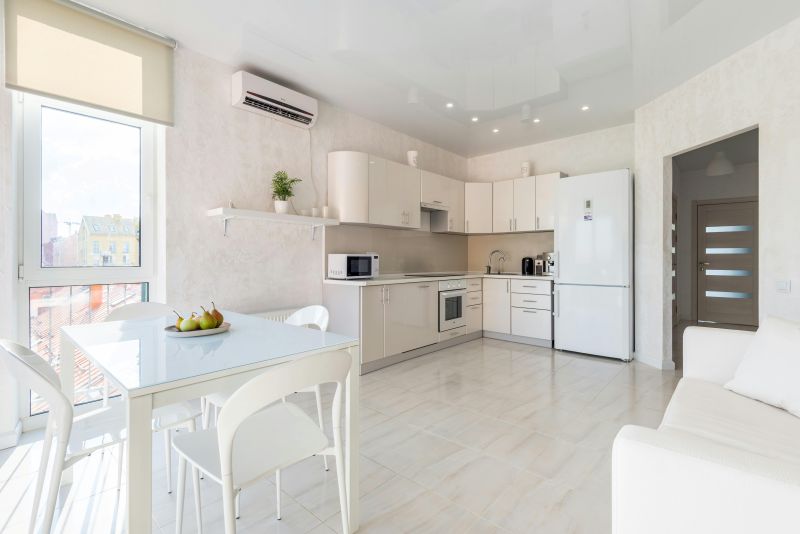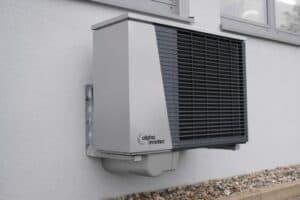
27 Apr Spring HVAC Checklist: What Every Homeowner Should Know
Spring HVAC Checklist: What Every Homeowner Should Know
As the days grow longer and the temperature starts to rise, homeowners often shift their focus to preparing their homes for the changing seasons. Spring is a great time to perform essential maintenance on your HVAC system, ensuring that it runs efficiently throughout the warmer months. Whether you rely on a central air conditioner or a heat pump, following a spring HVAC checklist can help prevent costly breakdowns and maintain comfort in your home.
In this article, we’ll guide you through the key steps to prepare your HVAC system for the spring season. From simple DIY tasks to professional maintenance, you’ll learn how to optimize your system’s performance and energy efficiency.
Why Spring HVAC Maintenance is Essential
Before diving into the specific tasks for spring HVAC maintenance, it’s important to understand why it’s essential to prioritize this process.
In the spring, your HVAC system may have been inactive for several months during the winter. This can lead to dust accumulation, potential issues with efficiency, and even unnoticed damage. Regular maintenance helps:
-
Increase energy efficiency by ensuring all components are running smoothly.
-
Extend the lifespan of your system, reducing the need for costly repairs or replacements.
-
Prevent breakdowns during peak usage periods, such as the summer.
-
Improve indoor air quality by removing dust and allergens that may have built up.
A little attention now can save you a lot of trouble later in the year. Let’s move on to the essential steps for getting your HVAC system ready for the season.

Step 1: Change Your Air Filter
One of the simplest yet most effective tasks on your spring HVAC checklist is changing the air filter. Over time, filters accumulate dust, dirt, and other particles, which can restrict airflow and make your system work harder.
-
How often should you change the filter? Typically, every 1 to 3 months, depending on usage and the type of filter.
-
What kind of filter should you choose? High-efficiency filters, like HEPA or MERV-rated filters, are ideal for keeping your air clean and improving system efficiency.
Changing the filter helps reduce strain on your HVAC system and ensures cleaner, healthier air in your home.
Step 2: Clean the Coils and Fins
The coils and fins in your air conditioning unit play a crucial role in cooling your home. However, over time, dirt and debris can accumulate on these components, reducing their efficiency.
-
Clean the coils: Using a soft brush or vacuum, carefully clean the evaporator and condenser coils. This will help the system release heat more effectively.
-
Clear the fins: Bent fins can restrict airflow and cause your unit to overheat. A fin comb tool can help straighten them.
Regular cleaning helps maintain optimal cooling performance and prevents wear and tear on your system.
Step 3: Inspect and Seal Ductwork
Ductwork issues are common in many homes and can significantly impact HVAC performance. Leaks, gaps, and disconnected ducts lead to energy loss and inconsistent airflow.
-
Inspect ducts: Look for visible gaps, cracks, or wear in the ducts. If you find any, seal them using duct tape or mastic sealant.
-
Ensure proper insulation: Make sure that ducts in unconditioned spaces (like attics or crawl spaces) are properly insulated to prevent energy loss.
By addressing ductwork issues, you can prevent unnecessary energy waste and improve overall system efficiency.
Step 4: Check the Thermostat Settings
Your thermostat is the control center for your HVAC system, so it’s crucial to ensure that it’s set correctly. Check the settings to ensure that it’s programmed to meet your needs.
-
Test the thermostat: Set your thermostat to cooling mode and lower the temperature by a few degrees. The system should activate. If it doesn’t, the thermostat may need recalibration or replacement.
-
Consider upgrading to a smart thermostat: Smart thermostats allow you to control your HVAC system remotely, set schedules, and even save energy by learning your preferences.
Proper thermostat settings can reduce energy usage and improve comfort.
Step 5: Schedule a Professional Inspection
While DIY tasks can go a long way, scheduling a professional inspection is a crucial step for ensuring the longevity and efficiency of your HVAC system. A licensed technician can:
-
Inspect and clean critical components, such as the blower motor, evaporator coil, and refrigerant levels.
-
Identify potential issues that could lead to breakdowns.
-
Perform system calibration and ensure everything is functioning at peak performance.
Professional inspections are an investment that can save you from major repair bills down the line.

Common HVAC Problems in Spring and How to Prevent Them
As the seasons change, several HVAC problems tend to arise more frequently. Here’s a look at some common spring HVAC issues and how you can prevent them:
-
Frozen coils: This can occur if the air filter is dirty or if the refrigerant level is low. Ensure regular maintenance to prevent this problem.
-
Inconsistent airflow: Leaky ducts, dirty filters, or faulty thermostats can cause airflow issues. Address these quickly to avoid comfort disruptions.
-
Unusual noises: Strange noises could indicate loose parts, issues with the blower motor, or other internal problems. Call a professional to address this.
Regular inspections and maintenance help avoid these problems.
Energy Efficiency Tips for Your HVAC System
Spring is the perfect time to assess your HVAC system’s energy efficiency. Here are a few ways to reduce your energy consumption:
-
Use ceiling fans: Ceiling fans circulate air, reducing the need for constant air conditioning.
-
Seal windows and doors: Prevent cool air from escaping by checking and replacing weatherstripping around windows and doors.
-
Maintain a consistent thermostat setting: Avoid frequent temperature changes, which can strain your HVAC system.
Improving energy efficiency not only saves money but also reduces your carbon footprint.

FAQs (Frequently Asked Questions)
1: How Often Should I Replace My HVAC Filter?
You should replace your HVAC filter every 1 to 3 months. If you have pets or allergies, you may need to replace it more frequently.
2: What Are the Signs My HVAC Needs Repairing?
Signs include strange noises, inconsistent temperatures, poor airflow, and an increase in energy bills. If you notice any of these, call a professional.
3: Can I Do HVAC Maintenance Myself?
Yes, you can perform some basic tasks like changing filters and cleaning coils. However, for more complex issues, it’s best to call a professional.
4: Why Is My Air Conditioner Not Cooling?
If your air conditioner isn’t cooling, it could be due to a dirty filter, low refrigerant levels, or a malfunctioning thermostat. Schedule a professional inspection to diagnose the issue.
5: How Can I Improve My HVAC System’s Lifespan?
Regular maintenance, including changing filters, cleaning coils, and scheduling professional inspections, can significantly extend the lifespan of your HVAC system.
6: Is a Smart Thermostat Worth the Investment?
Yes, a smart thermostat can help you save money on energy bills by adjusting the temperature based on your schedule and preferences. It also provides remote control features.
7: How Can I Tell If My HVAC System Needs Refrigerant?
If your air conditioner isn’t cooling effectively or you notice ice forming on the evaporator coils, it could indicate low refrigerant levels. This issue requires a professional technician to check and refill the refrigerant.
8: Should I Cover My Outdoor HVAC Unit for the Winter?
It’s generally not recommended to completely cover your outdoor HVAC unit, as it can trap moisture and cause damage. However, using a cover that allows for proper ventilation can protect it from debris and harsh weather conditions.
9: How Can I Make My HVAC System More Energy-Efficient?
In addition to regular maintenance, you can make your HVAC system more energy-efficient by upgrading to a high-efficiency model, ensuring proper insulation in your home, and using programmable thermostats to optimize heating and cooling.
Conclusion: Spring HVAC Maintenance and You
Proper spring HVAC maintenance is key to ensuring a comfortable, efficient home throughout the warmer months. By following the steps outlined in this checklist, you can avoid unexpected repairs, save money on energy bills, and extend the lifespan of your HVAC system. Remember, regular maintenance is the best way to keep your home cool and comfortable year-round.


Sorry, the comment form is closed at this time.